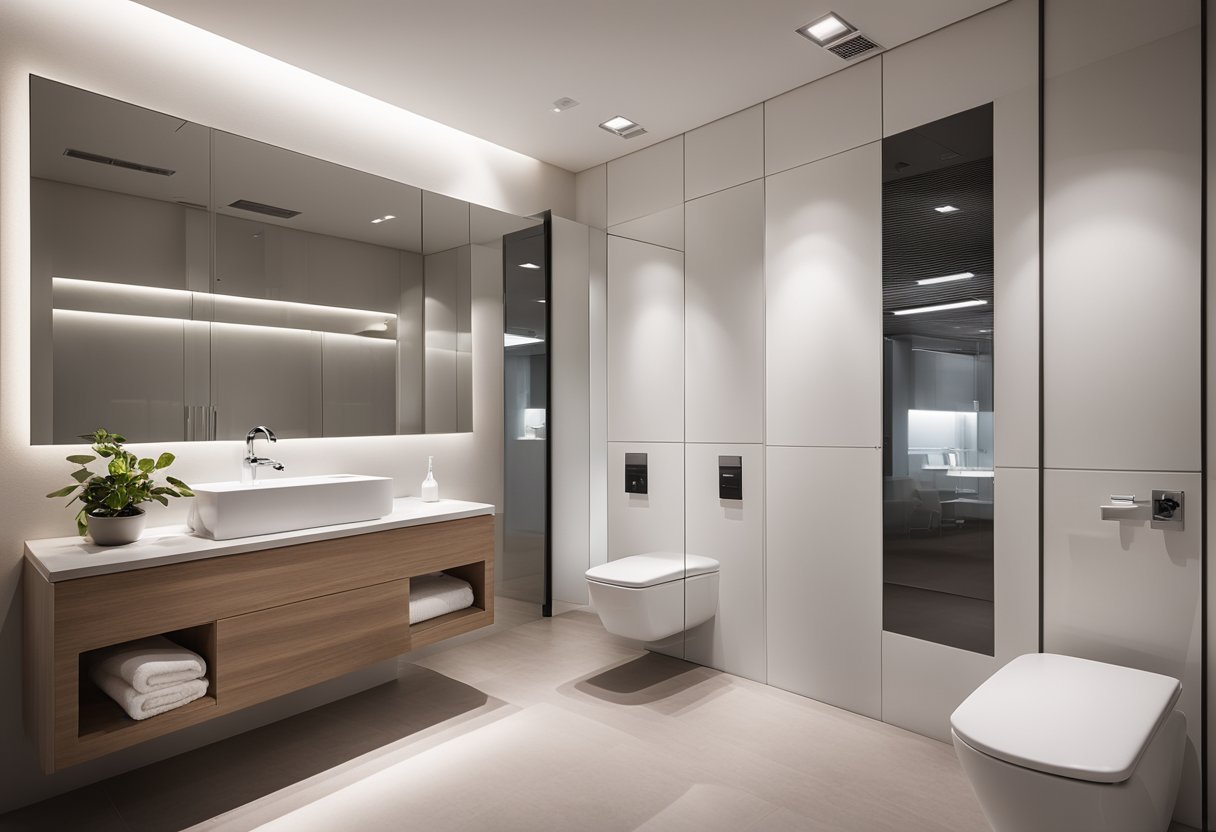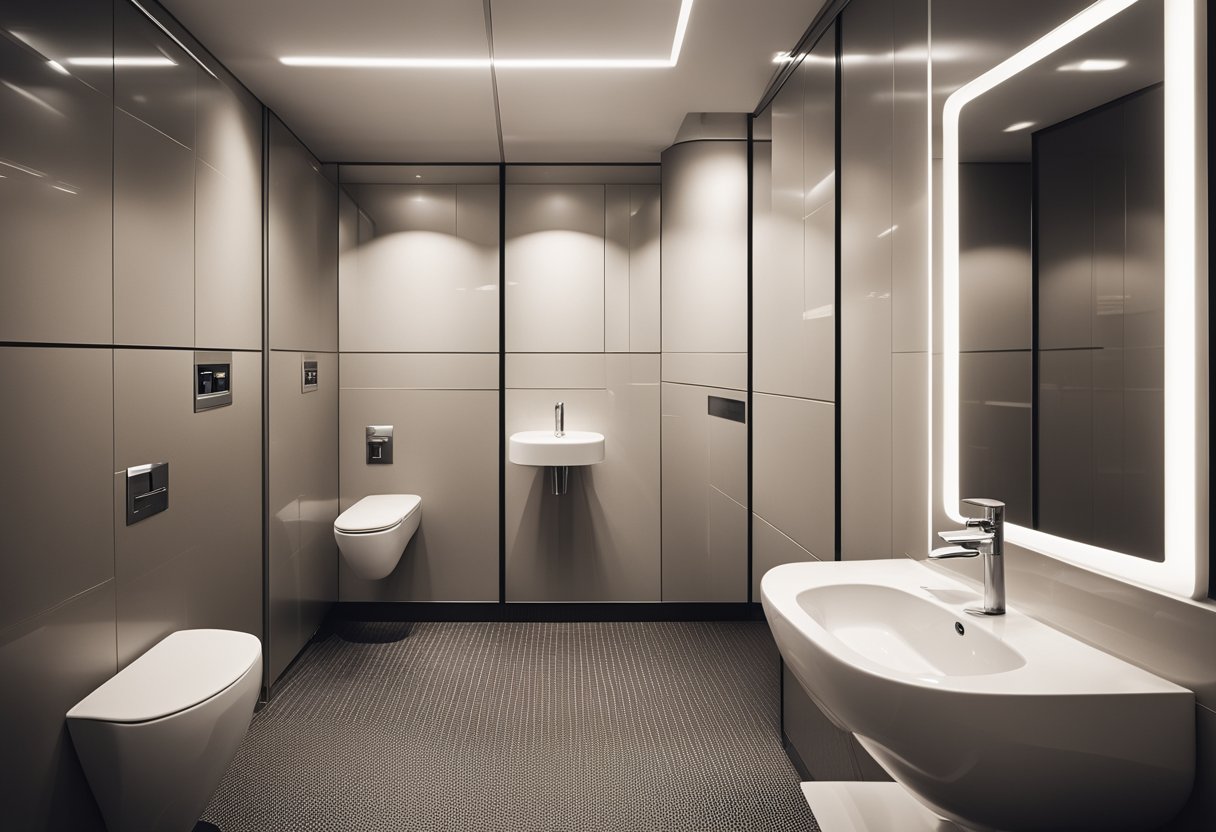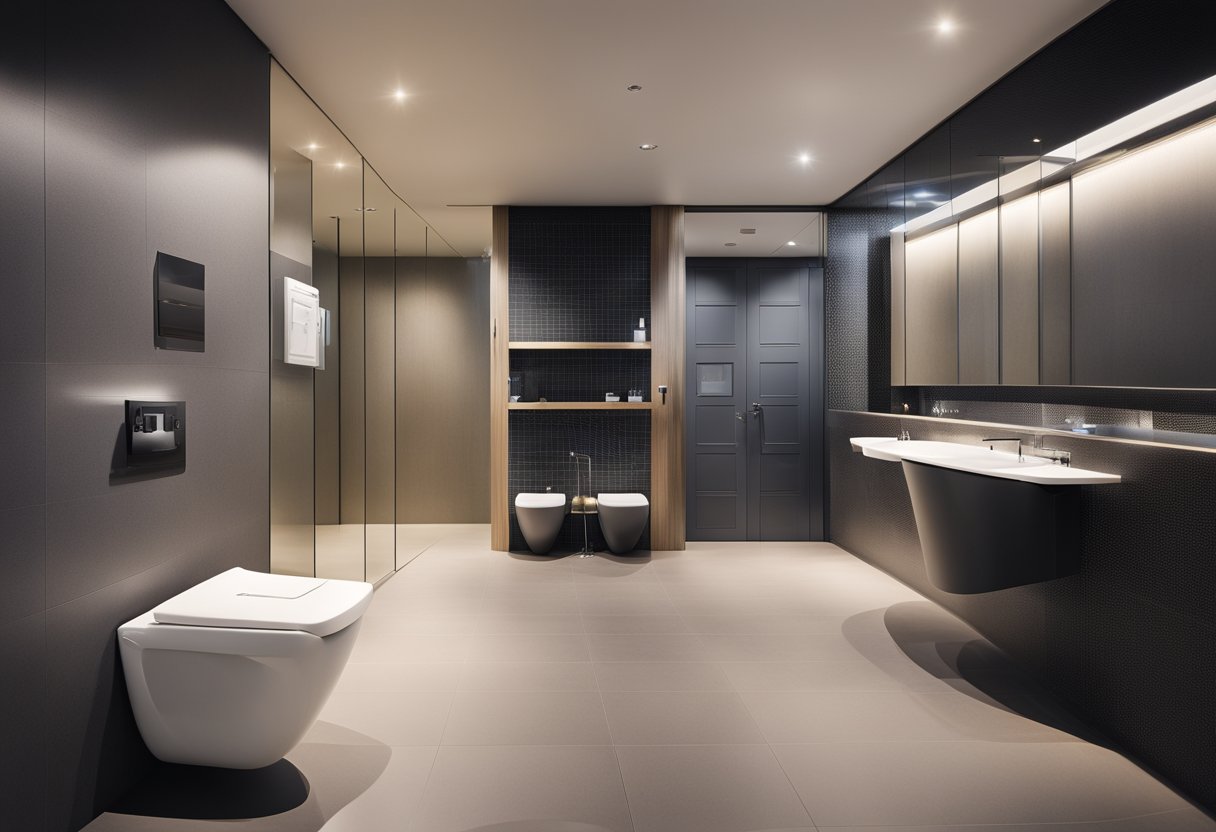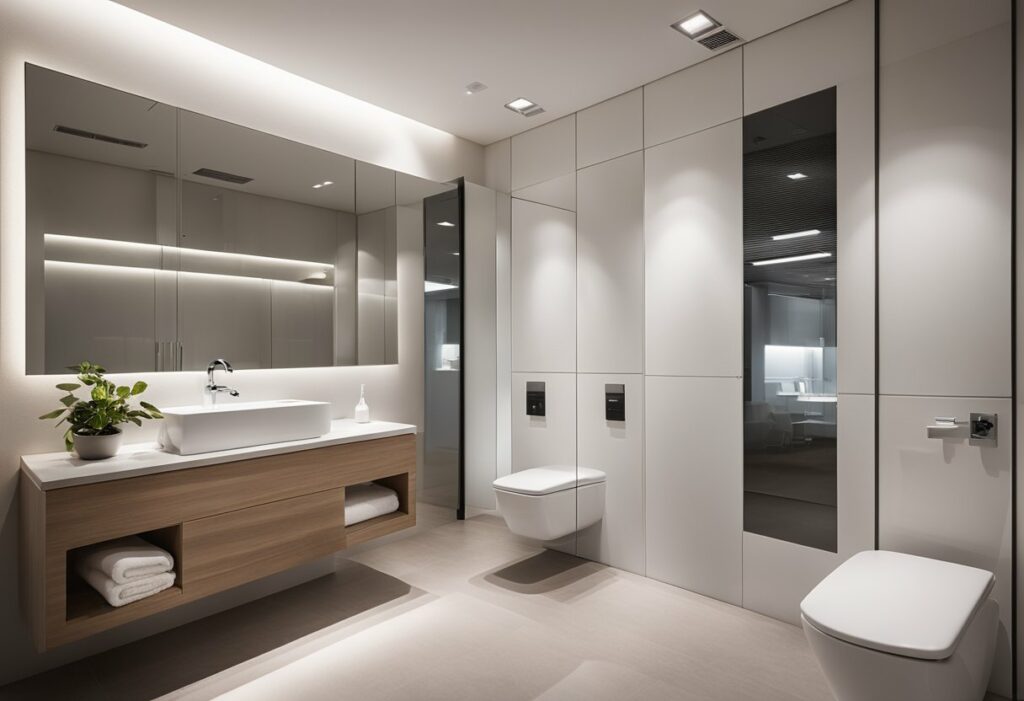Female Toilet Design: Innovations for Comfort and Privacy
As a woman, you know the importance of having access to clean, safe, and private restrooms. Unfortunately, many public toilets are not designed with women in mind, leading to discomfort, inconvenience, and even health risks. That’s where female toilet design comes in.

Female-friendly toilet design takes into consideration the unique needs and preferences of women. It focuses on creating a space that promotes dignity, safety, and hygiene, while also providing the necessary features and amenities for a comfortable experience. From the layout and lighting to the materials and fixtures, every aspect of the design is carefully planned to meet the needs of women of all ages, sizes, and abilities.
Designing and building female-friendly toilets requires careful planning and consideration of various factors, such as the number of users, the location, the budget, and the cultural norms. It also involves collaboration between architects, engineers, contractors, and other stakeholders to ensure that the design meets the required standards and regulations. With the right design and planning considerations, female-friendly toilets can help improve the quality of life for women and promote gender equality.
Key Takeaways
- Female-friendly toilet design takes into consideration the unique needs and preferences of women, promoting dignity, safety, and hygiene.
- Designing and building female-friendly toilets requires careful planning and collaboration between various stakeholders.
- Female-friendly toilets can help improve the quality of life for women and promote gender equality.
Design and Planning Considerations

Designing a female-friendly toilet requires careful consideration of several factors, including safety and privacy, hygiene and sanitation, and accessibility and inclusivity. Here are some key design and planning considerations to keep in mind:
Safety and Privacy
When it comes to designing female toilets, safety and privacy are paramount. The toilet should be located in a safe location, away from potential hazards and risks. The entrance to the toilet should be clearly visible and well-lit, with doors that can be easily locked from the inside. The toilet should also be designed to prevent harassment and gender-based violence, with features such as emergency alarms and panic buttons.
Hygiene and Sanitation
Hygiene and sanitation are crucial considerations in female toilet design. Access to water, soap, and sanitary products is essential, and the toilet should be designed to facilitate easy cleaning and maintenance. Menstrual hygiene should also be taken into account, with the provision of sanitary bins and other facilities for the safe and hygienic disposal of menstrual waste.
Accessibility and Inclusivity
To ensure that female toilets are accessible and inclusive for all users, it’s important to consider the needs of different groups, including children, pregnant women, and people with mobility issues. The toilet should be designed to be easily accessible, with features such as handrails and non-slip flooring. Gender sensitivity should also be taken into account, with consultation and assessment of the needs of different groups to ensure that the toilet is designed to meet their specific requirements.
By taking these factors into consideration during the planning and design phase, you can create a female toilet that is safe, hygienic, and accessible for all users.
Features and Amenities

When designing female-friendly toilets, it is important to consider the specific needs of women and girls. In this section, we will explore some of the key features and amenities that should be included in female-friendly toilets.
Menstrual Hygiene Management
One of the most important considerations when designing female-friendly toilets is menstrual hygiene management. This includes providing facilities for changing and disposing of menstrual products, as well as ensuring that toilets are clean and hygienic. To meet these needs, female-friendly toilets should include:
- A hook or shelf for hanging bags or purses
- A seat that is clean and comfortable to use
- Showers or bidets for cleaning
- Facilities for the disposal of menstrual waste
- Adequate supplies of menstrual products
It is also important to consider the privacy and dignity-related needs of women and girls when designing toilets. This includes ensuring that there are separate facilities for men and women, as well as providing facilities for changing and disposing of menstrual products in a private and hygienic manner.
Facilities for Mothers and Caregivers
Another important consideration when designing female-friendly toilets is facilities for mothers and caregivers. This includes providing baby changing stations and facilities for breastfeeding, as well as ensuring that toilets are accessible to family members with disabilities. To meet these needs, female-friendly toilets should include:
- Baby changing stations
- Facilities for breastfeeding
- Accessible toilets for family members with disabilities
Water, Sanitation, and Hygiene (WASH) Standards
Finally, it is important to ensure that female-friendly toilets meet water, sanitation, and hygiene (WASH) standards. This includes providing access to clean water and soap, as well as ensuring that toilets are clean and well-maintained. To meet these needs, female-friendly toilets should include:
- Adequate supplies of clean water and soap
- Regular cleaning and maintenance
- Access to sanitation services, such as waste disposal and sewage treatment
By incorporating these features and amenities into female-friendly toilets, you can help to ensure that women and girls have access to safe, hygienic, and dignified facilities that meet their specific needs.
Frequently Asked Questions

How can one optimise space in a compact ladies’ restroom design?
When designing a compact ladies’ restroom, it is essential to make the most of the available space. One way to do this is to use wall-mounted fixtures such as toilets and sinks. This can free up valuable floor space and make the restroom feel more spacious. Another way to optimise space is to use sliding doors instead of traditional hinged doors. Sliding doors take up less space and can also add a modern touch to the restroom design.
What are the essential features for a superb women’s restroom interior?
A superb women’s restroom should have a clean and hygienic interior with enough lighting and ventilation. It should also have adequate privacy for users. Some essential features to consider are comfortable seating, spacious stalls, easy-to-use flush systems, and well-placed mirrors. Additionally, it’s essential to have a regular cleaning schedule to maintain a high level of hygiene.
Could you suggest some innovative ideas for modern ladies’ toilet facilities?
Innovative ideas for modern ladies’ toilet facilities include hands-free fixtures such as automatic flush toilets and motion-activated faucets. Another trend is the use of sustainable materials such as bamboo or recycled plastic for restroom fixtures and accessories. Incorporating artwork or greenery can also add a touch of creativity and freshness to the restroom design.
What are the latest trends in female restroom design with showers included?
The latest trends in female restroom design with showers include the use of natural materials such as stone or wood for flooring and wall cladding. Another trend is the use of large-format tiles or slabs for a seamless and modern look. In addition, incorporating LED lighting and sound systems can create a relaxing and spa-like atmosphere.
How does the design of a women’s toilet differ from a men’s in terms of functionality and aesthetics?
The design of a women’s toilet differs from a men’s in terms of functionality and aesthetics in several ways. Women’s restrooms typically have more stalls than men’s restrooms to accommodate longer wait times. Women’s restrooms also tend to have more mirrors and brighter lighting for makeup application. Aesthetically, women’s restrooms may incorporate softer colours and more decorative elements than men’s restrooms.
What regulations should be considered when designing a ladies’ toilet in a commercial setting?
When designing a ladies’ toilet in a commercial setting, several regulations should be considered. These include the number of fixtures required based on the occupancy load, the minimum stall size, and the required clearances around fixtures. It’s also important to comply with accessibility requirements for users with disabilities, including the provision of accessible stalls and grab bars.



